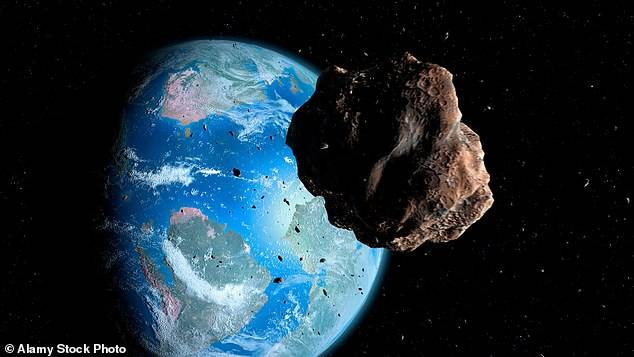The idea of an asteroid the size of London's Big Ben zooming past our planet may sound the plot of the latest science fiction blockbuster.
But it's set to become a reality tomorrow, when a space rock will come within 3.4 million miles of Earth.
While that might sound far, NASA classes it as a 'near Earth' approach, and even says that this asteroid is 'potentially hazardous'.
Named '2023 JD2', the asteroid is estimated to measure up to 360ft (110 metres) in diameter.
To put that into perspective, it's bigger than both London's Big Ben and New York's Statue of Liberty, which measure 315ft (96 metres) and 305ft (93 metres) respectively.
Named '2023 JD2', the asteroid is estimated to measure up to 360ft (110 metres) in diameter. To put that into perspective, it's bigger than both London's Big Ben and New York's Statue of Liberty, which measure 315ft (96 metres) and 305ft (93 metres) respectively
What is a 'potentially hazardous' asteroid?
A potentially hazardous asteroid is an asteroid whose orbit comes nearer than 0.05AU (about 7.5 million km) to the Earth.
It also is at least 100 metres (300 feet) in diameter.
The International Astronomical Union claims there are around 1,500 potential hazardous asteroids.
Although these are not a risk to Earth as of yet, asteroids this large have the potential to cause devastation if they were to land on our planet, especially in highly-populated areas.
It is believed one hits Earth once every 200-300 years.
The asteroid will make its closest approach to Earth tomorrow at 19:52 GMT.
At that point, it will be around 0.03au (3.4 million miles) away from us, and travelling at dizzying speeds of up to 29,000mph, according to NASA.
'Near-Earth objects are asteroids and comets with orbits that bring them to within 120 million miles (195 million kilometers) of the Sun, which means they can circulate through the Earth’s orbital neighborhood,' NASA explained.
'Most near-Earth objects are asteroids that range in size from about 10 feet (a few meters) to nearly 25 miles (40 kilometers) across.'
While the chance of this asteroid hitting Earth is extremely low, NASA hasn't ruled out the risk of an asteroid collision in the near future.
NASA discovers around 30 new 'near-Earth objects' (NEOs) every week, and at the start of 2019 had discovered a total of more than 19,000 objects.
However, the space agency has warned its NEO catalogue isn't complete, meaning an unpredicted impact could occur at 'any time.'
NASA explained: 'Experts estimate that an impact of an object the size of the one that exploded over Chelyabinsk, Russia, in 2013 – approximately 55 feet (17 meters) in size – takes place once or twice a century.


